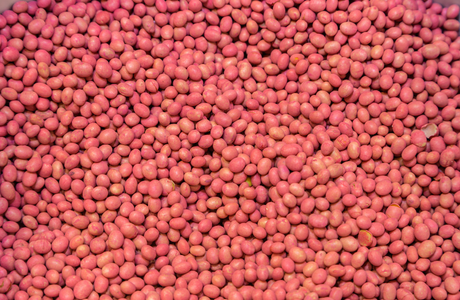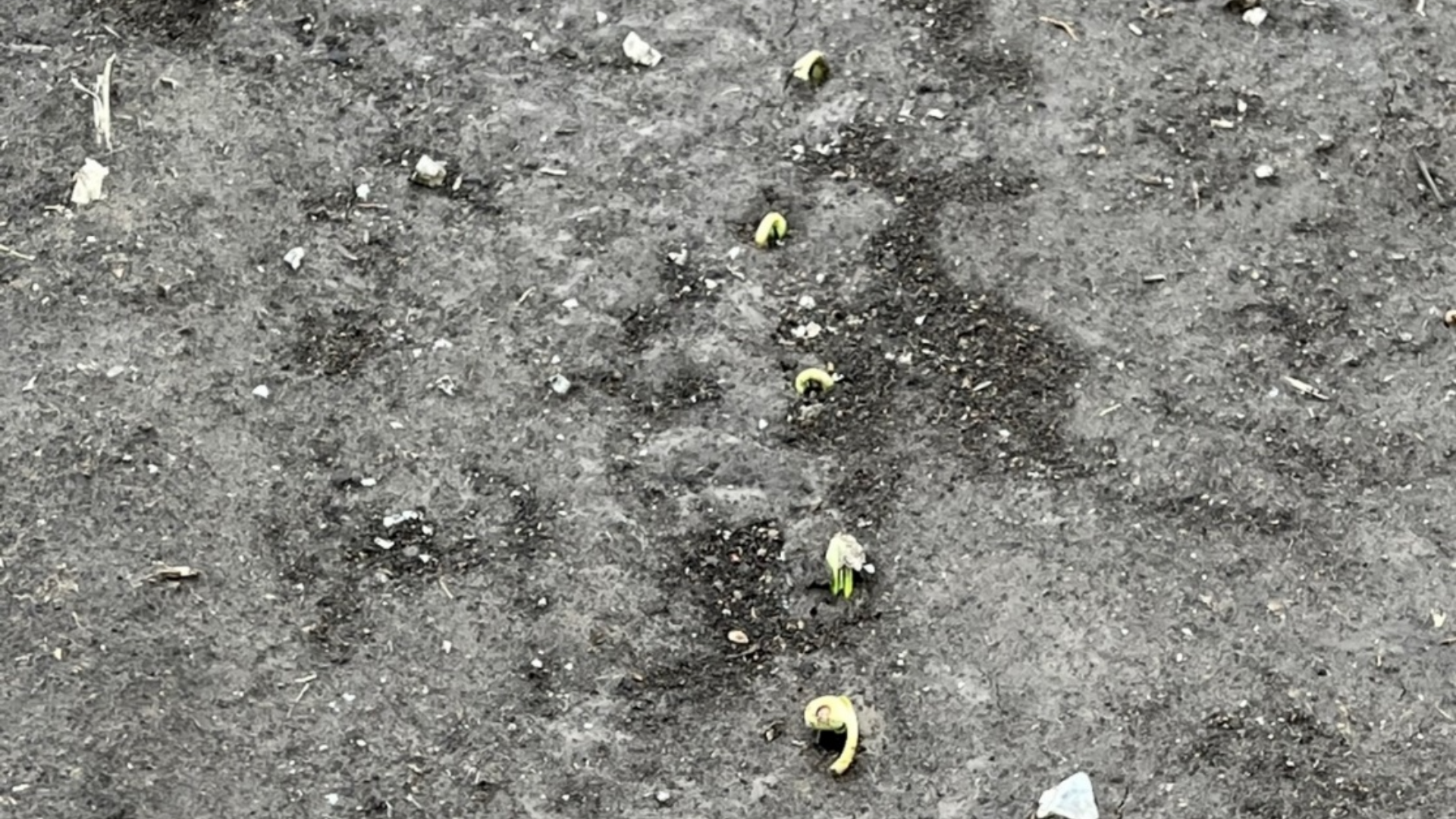
Using Your Bean
Planting earlier maturing soybeans early in the growing season is not really a new concept—just newer and progressively earlier around here every year. Maybe this is done to promote more vegetative growth; i.e. more early flowers before weather stress, more pods, more yield, etc. Or perhaps for a time and labor management status. Possibly to initiate early harvest and get some acres completed before the corn is ready.
Last year, the results from the grower standpoint were that the early planted soybeans were average or maybe slightly below the average of some of the later planted soybeans. Again, the weather played a role here. If you remember, last April wasn’t necessarily overly wet, however, it was extensively cold, and developing soybean stands showed it. See image below:
Historically, for the previous five years or so, Group 2 soybeans were as good, if not better than what they have traditionally done with planting a Mid to Late Group 3 somewhere in the middle of May. Is this a product of breeding and genetics? Weather? Luck? As a result, you may have considered going to earlier RM soybeans entirely, since these have been the best-producing soybean lately. UNL’s On-Farm Research conducted a three-year study from 2018-2020 with this same objective in mind, see below:
View UNL Soybean Maturity Group Sites Data >
Equal yield, early harvest, WHY NOT?
This may make you wonder why you haven’t done this before. This has caught on with the highly managed acre. Growers that plant soybean populations around 120k, and plant early to mid-April, have irrigation available (of UNL’s study, six of the ten were irrigated), are fertility balanced, are not afraid to apply supplemental fertility if needed, (P/K), run insecticide and/or fungicides, and probably the most important part of this is — a timely harvest.
Group 2 soybeans planted South of I-80 in late April to early May will normally be ready for harvest around September 15th. We have all sat in combines and watched soybean pods split open via sickle shatter or contact with the reel (physical loss). We have all sat in combines and seen the moisture drop from 14% maybe when you start a day, only to end up about 9% (or below) by sundown of the same day—(moisture loss). The point here is, you must be ready to harvest them in a timely fashion. Harvest them a bit “wetter” than normal. Group 2 soybeans/early planted soybeans, in our general area, need a September harvest to avoid excessive harvest losses.
Think about it this way:
A standard bushel of soybeans weighs 60 lbs at 13% moisture. 13% grain moisture means there is 87% dry matter. The dry matter in a standard bushel is 52.2 lb (60 x 0.87) and the remaining 7.8 lbs are water. Now consider, if the moisture content drops to 11% and you now have 89% dry matter content in that bushel, the wet basis weight would be 52.2 lb divided by 0.89 to equal 58.65 lb. For each bushel harvested at 11%, you miss an opportunity to sell 1.35 lb of water (60-58.65 lb). Can you get them all harvested at 13%, it’s not likely. So here is where I am going with this—plant a range of maturities like you always have.
We have also learned that anyone planting lower populated, early-planted soybeans that are earlier than the normal RM, must be a very good manager. The soybeans are managed highly from planting date to harvest date and everything in between. If you are not that type of grower or are unwilling to adapt to a higher management approach to production, then stick with the tried and true normal RM varieties, at the tried and true planting dates. Everyone will be much happier at harvest.
This is a bold statement for a reason. We must remember that specific soybean varieties (not as much in corn) have been bred and developed with specific geographic maturity zones in mind. This concept/breeding is developed perpetually via changing weather conditions, insects, disease pressure, etc. When that specific maturity is taken out of the geographic maturity zone that it was bred and developed for—everything must go right for it to equal the performance of maturity groups normally grown in that region.
Consider this analogy: “You can grow cotton in Nebraska.” Sure, it will grow here…The problem is that most years, we would run out of heat units for it to mature and bear quality lint.


